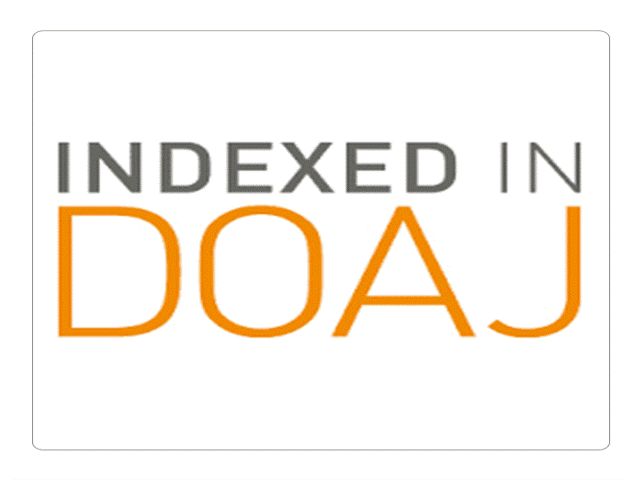DEVELOPMENT OF AN ELECTRONIC EXAMINATION PLATFORM USING FACE RECOGNITION METHODS
DOI:
https://doi.org/10.25271/sjuoz.2024.12.3.1289Keywords:
Computer-Based-Examination, Face Recognition, Deep Learning, E-Learning, Web-Based-ExaminationAbstract
Online systems face a major challenge in efficiently monitoring participants and students throughout lectures, particularly during exams. Establishing robust approaches and technologies is essential for identifying unjust, unethical, and illegal conduct in educational environments, particularly during academic courses and examinations. This study introduces a novel online proctoring system that employs deep learning to continuously supervise physical locations without requiring a human proctor. The system utilizes face detection and recognition algorithms to implement biometric procedures, including facial recognition. This work presents a novel approach for face recognition training, which involves an incremental training procedure. This eliminates the requirement for an additional step, resulting in reduced computation cost and time. In order to achieve high accuracy, the suggested model evaluated three distinct face detectors: HOG, MTCNN, and Yoloface. The assessment of the suggested model demonstrates that the HOG approach has surpassed the others. The proposed approach yields a significantly high accuracy rate.
Downloads
References
R. Mehmood, F. Alam, N. N. Albogami, I. Katib, A. Albeshri, and S. M. Altowaijri, “UTiLearn: A Personalised Ubiquitous Teaching and Learning System for Smart Societies,” IEEE Access, vol. 5, pp. 2615– 2635, 2017.
Hussein, M. S., Younis, M. I. & Al-Tameemi, M. I. (2016). Construction of an Online Examination System. Scholars Press.
Arora, S., Chaudhary, P., & Singh, R. K. (2021). Impact of coronavirus and online exam anxiety on self-efficacy: the moderating role of coping strategy. Interactive Technology and Smart Education.
Ana, P. & Bukie, P. T. (2013). Design and implementation of online examination administration system for universities. Global Journal of Mathematical Sciences, 12(1), 39-51.
Huszti, A. & Petho, A. (2010). A secure electronic exam system. Publicationes Mathematicae Debrecen, 77(3-4), 299-312.
Yigitcanlar, T., Kankanamge, N., Regona, M., Ruiz Maldonado, A., Rowan, B., Ryu, A., ... & Li, R. Y. M. (2020). Artificial intelligence technologies and related urban planning and development concepts: How are they perceived and utilized in Australia?. Journal of Open Innovation: Technology, Market, and Complexity, 6(4), 187.
Yigitcanlar, T., Butler, L., Windle, E., Desouza, K. C., Mehmood, R., & Corchado, J. M. (2020). Can building “artificially intelligent cities” safeguard humanity from natural disasters, pandemics, and other catastrophes? An urban scholar’s perspective. Sensors, 20(10), 2988.
Janbi, N., Katib, I., Albeshri, A., & Mehmood, R. (2020). Distributed artificial intelligence-as-a-service (DAIaaS) for smarter IoE and 6G environments. Sensors, 20(20), 5796.
Yigitcanlar, T., Corchado, J. M., Mehmood, R., Li, R. Y. M., Mossberger, K., & Desouza, K. (2021). Responsible urban innovation with local government artificial intelligence (AI): A conceptual framework and research agenda. Journal of Open Innovation: Technology, Market, and Complexity, 7(1), 71.
Sayed, W. S., Noeman, A. M., Abdellatif, A., Abdelrazek, M., Badawy, M. G., Hamed, A., & El-Tantawy, S. (2023). AI-based adaptive personalized content presentation and exercises navigation for an effective and engaging E-learning platform. Multimedia Tools and Applications, 82(3), 3303-3333.
Rathi, V. K., Rajput, N. K., Mishra, S., Grover, B. A., Tiwari, P., Jaiswal, A. K., & Hossain, M. S. (2021). An edge AI-enabled IoT healthcare monitoring system for smart cities. Computers & Electrical Engineering, 96, 107524.
Alotaibi, S., Mehmood, R., Katib, I., Rana, O., & Albeshri, A. (2020). Sehaa: A big data analytics tool for healthcare symptoms and diseases detection using Twitter, Apache Spark, and Machine Learning. Applied Sciences, 10(4), 1398.
Alomari, E., Katib, I., & Mehmood, R. (2023). Iktishaf: A big data road-traffic event detection tool using Twitter and spark machine learning. Mobile Networks and Applications, 28(2), 603-618.
Aqib, M., Mehmood, R., Alzahrani, A., Katib, I., Albeshri, A., & Altowaijri, S. M. (2019). Smarter traffic prediction using big data, in-memory computing, deep learning and GPUs. Sensors, 19(9), 2206.
Mohammed, T., Albeshri, A., Katib, I., & Mehmood, R. (2020). UbiPriSEQ—Deep reinforcement learning to manage privacy, security, energy, and QoS in 5G IoT hetnets. Applied Sciences, 10(20), 7120.
Rahman, R., & Hasan, S. (2023). A deep learning approach for network-wide dynamic traffic prediction during hurricane evacuation. Transportation research part C: emerging technologies, 152, 104126.
Saeed, R. H. (2024). Improved System for Smart City Street-Lighting Controlling based on Web Technology Principles. International Journal of Intelligent Systems and Applications in Engineering, 12(12s), 100-114.
Alam, F., Almaghthawi, A., Katib, I., Albeshri, A., & Mehmood, R. (2021). IResponse: An AI and IoT-enabled framework for autonomous COVID-19 pandemic management. Sustainability, 13(7), 3797.
Kassem, A., Falcone, Y., & Lafourcade, P. (2015). Monitoring electronic exams. In Runtime Verification: 6th International Conference, RV 2015, Vienna, Austria, September 22-25, 2015. Proceedings (pp. 118-135). Springer International Publishing.
Albazie, H. A. (2023). Factors affecting the use of e-learning in Saudi Arabia: an analysis of academics’ perspectives (Doctoral dissertation, University of Glasgow).
Dreier, J., Giustolisi, R., Kassem, A., Lafourcade, P., Lenzini, G., & Ryan, P. Y. (2014, August). Formal analysis of electronic exams. In 2014 11th International Conference on Security and Cryptography (SECRYPT) (pp. 1-12). IEEE.
Kassem, A., Falcone, Y., & Lafourcade, P. (2017). Formal analysis and offline monitoring of electronic exams. Formal Methods in System Design, 51, 117-153.
Moxley, E., Saravanan, A., Habtezgi, D., Dixon, L., Miller, J., & Waller, M. (2021). Virtual pedagogical strategies and HESI student outcomes in response to COVID-19. Nurse Education Today, 104, 105019.
Coghlan, S., Miller, T., & Paterson, J. (2021). Good proctor or “big brother”? Ethics of online exam supervision technologies. Philosophy & Technology, 34(4), 1581-1606.
Hubler, S. (2020). Keeping online testing honest? Or an Orwellian overreach. The New York Times.
Binstein, J. (2015). On knuckle scanners and cheating–how to bypass proctortrack, examity, and the rest. Online, January.
Oduntan, O. E., & OJUAWO, O. (2019). Development of Electronic Examination System using a Client-Server Model. International journal of computer applications, 180(24).
Wahid, A., Sengoku, Y., & Mambo, M. (2015, January). Toward constructing a secure online examination system. In Proceedings of the 9th international conference on ubiquitous information management and communication (pp. 1-8).
Sattar, M. R. I., Efty, M. T. B. H., Rafa, T. S., Das, T., Samad, M. S., Pathak, A., ... & Ullah, M. H. (2023). An advanced and secure framework for conducting online examination using blockchain method. Cyber Security and Applications, 1, 100005.
Rosen, W. A., & Carr, M. E. (2013, October). An autonomous articulating desktop robot for proctoring remote online examinations. In 2013 IEEE frontiers in education conference (FIE) (pp. 1935-1939). IEEE.
Maniar, S., Sukhani, K., Shah, K., & Dhage, S. (2021, July). Automated proctoring system using computer vision techniques. In 2021 International conference on system, computation, automation and networking (ICSCAN) (pp. 1-6). IEEE.
Published
How to Cite
Issue
Section
License
Copyright (c) 2024 Maryam A. Sulaiman

This work is licensed under a Creative Commons Attribution 4.0 International License.
Authors who publish with this journal agree to the following terms:
- Authors retain copyright and grant the journal right of first publication with the work simultaneously licensed under a Creative Commons Attribution License [CC BY-NC-SA 4.0] that allows others to share the work with an acknowledgment of the work's authorship and initial publication in this journal.
- Authors are able to enter into separate, additional contractual arrangements for the non-exclusive distribution of the journal's published version of the work, with an acknowledgment of its initial publication in this journal.
- Authors are permitted and encouraged to post their work online.








